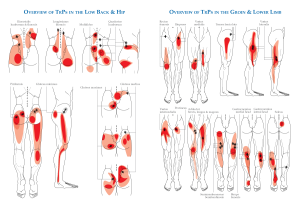Why Your Recovery Period Is Very Important In Preventing Back Injuries

Category: | Author:
When it comes to preventing back injuries, many people assume it is what you do before and during exercise or athletic activity that dictates your likelihood of suffering an injury, and that is true to an extent. Taking steps to prepare your body for activity and using proper techniques during exercise can help to reduce your risk of injury, but what you do after exercise can also play an important role in injury mitigation. In today’s blog, we share some ways that you can use your recovery period to protect against back injuries.
Avoiding Back Injuries By Recovering Right
Your recovery period is a vital time for your body because it has been physically stressed as a result of exercise or activity. It is currently weaker and at an elevated risk of injury, but if you take certain steps during this time, you can help your body recover faster and stronger and in turn reduce your risk of back problems during athletics. Here’s what you’ll want to do:
- Give It Plenty Of Rest – Overstress injuries are incredibly common among athletes and weekend warriors. If you don’t give your body enough time to physically recover from the rigors of athletics, it will not be as strong the next time you try to push yourself with activity. Putting too much strain on your lower back in too short of a time period is a recipe for inflammation and soft tissue injuries. Make sure that you are giving your body some time off between intense exercise or athletics.
- Don’t Stay Still – On the flip side, we don’t want you to just sit on the couch and do nothing on your off days. Too much inactivity can make it easier for muscles and soft tissues to stiffen up, and it can also limit blood flow to an area. Staying active with light activities like walking or a short lower body workout can get your heart rate up and push healthy blood to recovering structures in your back. You may have some soreness the day after activity, but still make it a point to get up and get moving the next day.
- Fuel Your Body – While this point is important every day, it’s especially true the day after grueling activity. Your body needs certain vitamins and minerals to fuel essential recovery processes, so give your body what it needs. Eat a range of leafy vegetables, juicy fruits, whole grains and lean proteins in order to provide your body with the right nutrients to aid in tissue recovery. Also be sure to drink plenty of water to improve circulation and muscle function.
- Stretch – Stretching isn’t just something you should do before a game or practice, it can also be a great addition to your off day. Stretching helps to keep muscles and soft tissues flexible, and as we mentioned above, these tissues can be more prone to stiffness the day after activity. Stretching can help combat some of the normal soreness that you’re feeling the next day, which can make your recovery day a little more comfortable, but it also helps you maintain normal elasticity in your muscles. Get in the habit of going through a short stretching routine the day after athletic activity.
- Harness Ice And Heat – Finally, consider harnessing the power of ice and heat to help your body recover after athletic activity. If your back is sore after exercise, a cold pack can limit inflammation and fluid retention in the area that could contribute to discomfort, while heat can help to open up blood vessels and make it easier for oxygenated blood to reach important structures. Ice may be best in the first few hours after activity, and heat may be better the next day, but figure out what works best for you and your back!
Of course, if you want some personalized advice for getting the most out of your recovery days after activity, or you need assistance overcoming a new back issue, reach out to Dr. Sinicropi and the team at The Midwest Spine & Brain Institute today at (651) 430-3800.
Related




